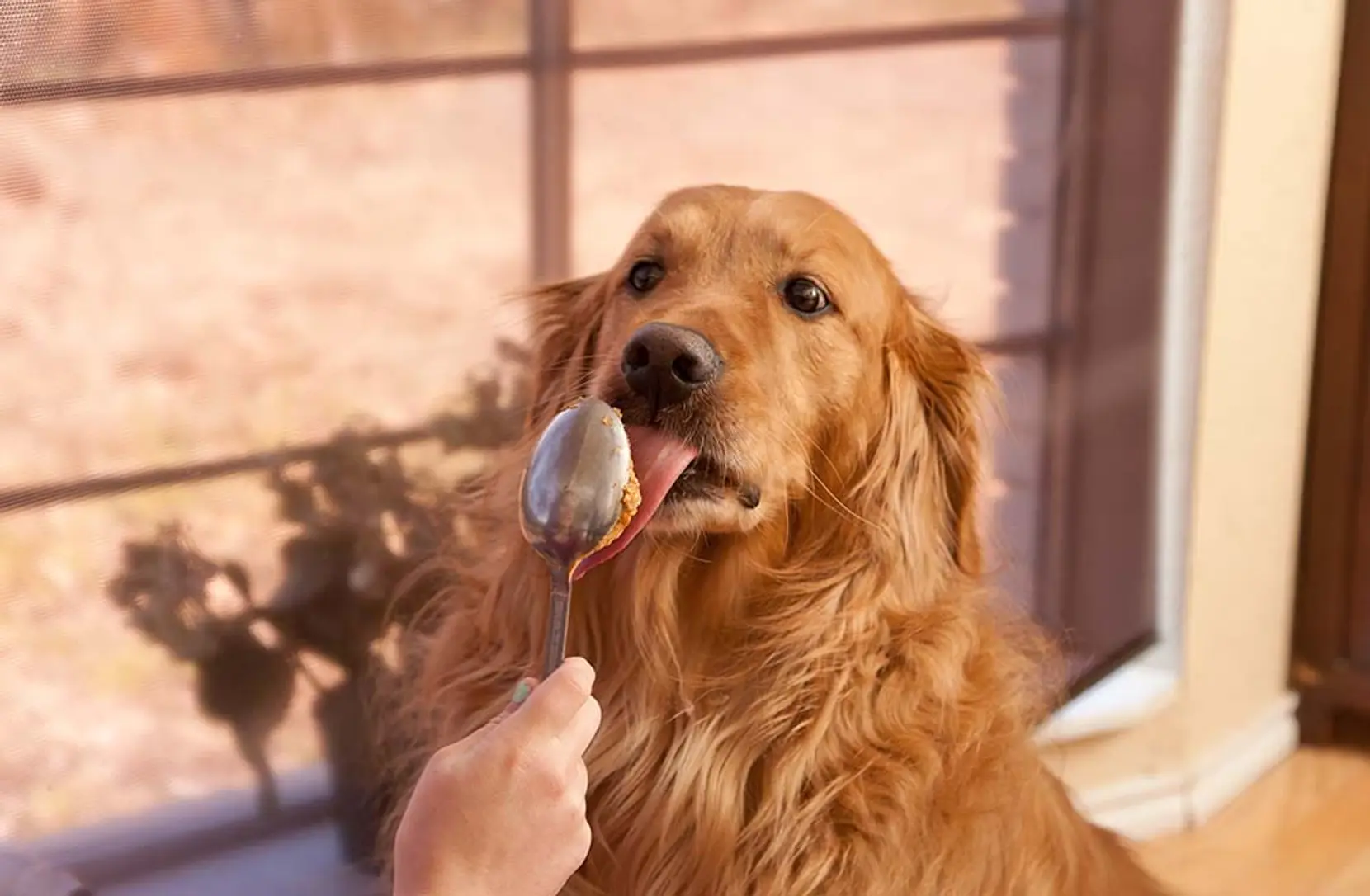The delicious, crunchy, and buttery Macadamia nut is a popular snack for humans, often used in ice cream and pastries.
Originally from Australia, the Macadamia nut is fondly referred to as the “queen of nuts.” Whether it’s because of its high price or exceptionally delicious taste remains unclear.
Like you, your dog has a preference for nuts as they are healthy and energy-rich. However, there are foods that dogs are allowed to eat and others that are absolutely forbidden. The following article enlightens you: Can dogs eat Macadamia nuts? Or is there a danger lurking for your beloved four-legged friend?
- Can Dogs Eat Macadamia Nuts: Caution, Toxic!
- How much Macadamia nut is toxic for dogs?
- Why are Macadamia nuts toxic to dogs?
- How does poisoning from Macadamia nuts manifest?
- What to Do If Your Dog Ate Macadamia Nuts?
- How to Prevent Your Dog’s Poisoning from Macadamia Nuts
- Which Nuts Can Dogs Eat?
- FAQ – Macadamia Nuts
Can Dogs Eat Macadamia Nuts: Caution, Toxic!
Under no circumstances should your dog eat Macadamia nuts! They, along with nutmeg and horse chestnuts, belong to the nuts that are extremely toxic to your dog and can cause severe symptoms.
Tip: Keep these poisonous foods for dogs in mind or even jot them down on your fridge. For more information on all foods that dogs should not eat, check our guide.
How much Macadamia nut is toxic for dogs?
As little as 0.7 grams per kilogram of body weight in dogs is sufficient to trigger severe poisoning. This amounts to just 3 to 4 nuts for a 15-kilogram dog. The smaller the dog, the fewer Macadamia nuts are needed, making poisoning potentially fatal, similar to chocolate.
Why are Macadamia nuts toxic to dogs?
For a long time, it was unclear what made the Macadamia nut so toxic to dogs. It is now strongly suspected that the cyanogenic glycoside proteactin, a precursor to cyanide, is responsible for poisoning in dogs.
How does poisoning from Macadamia nuts manifest?

In most cases, the first signs of poisoning in dogs appear within 2 to 6 hours, depending on the size and sensitivity of the dog. The initial symptoms often include vomiting and abdominal cramps. Other symptoms follow:
Additionally, the dog may show allergic reactions.
The poison in Macadamia nuts has a significant impact on the dog’s nerves, causing “misfires” in the muscles and epileptic seizures. In the later stages, the poison causes considerable damage to the dog’s liver as the unprocessed toxin accumulates there. This can lead to the death of the dog.
What to Do If Your Dog Ate Macadamia Nuts?

If you, as a dog owner, caught your dog red-handed nibbling on your macadamia nuts, don’t panic. Your dog can sense when you’re afraid, and that fear transfers to them. Take a deep breath and call your veterinarian’s number.
It’s crucial to act in the first 2 hours to prevent significant damage to your beloved furry friend. During this time, the dog can receive activated charcoal, which binds the poison in the gastrointestinal tract. Additionally, the veterinarian can induce vomiting to remove the nuts from the dog’s stomach. However, this method is only effective within the first 2 hours due to the dog’s progressing digestion.
Important:
You can administer activated charcoal yourself if you have it at home. Still, please do not attempt to induce vomiting on your own. Only a professional, the veterinarian, should do that. Even if your dog is large and has only eaten one macadamia nut, have them examined by the veterinarian. Every dog is differently sensitive, and your furry friend might have an allergy to this nut.
If you don’t know when your dog ate the macadamia nuts, especially how many, and it already shows the initial symptoms of poisoning, take the dog to the veterinarian as soon as possible. There is no antidote for the poison in macadamia nuts. In this case, the veterinarian will attempt to flush the toxin from the dog’s body through infusions. Additionally, the dog will receive painkillers and antispasmodic medications.
The dog will be closely monitored and cared for during the hospitalization. The dog is considered out of danger only when no further symptoms of poisoning occur within 24 to 48 hours.
How to Prevent Your Dog’s Poisoning from Macadamia Nuts
Dogs are incredibly smart and inventive when it comes to getting treats, especially when it comes to “human food.”
The only effective thing you can do is either not have the nuts that are toxic to dogs in the house or store them so well that the dog has no way of reaching them. This applies, of course, to other treats that may contain macadamia nuts. By the way, roasted macadamia nuts are just as toxic to dogs.
Which Nuts Can Dogs Eat?

Some nuts are very digestible for your dog, albeit true calorie bombs. Due to their high-fat content, they should only be fed in small quantities.
Nuts contain many high-quality ingredients, such as omega-3 fatty acids, vitamin E, phosphorus, B vitamins, and various minerals.
Permissible types of nuts include:
- Peanuts,
- certain chestnuts,
- pistachios,
- Brazil nuts,
- and cashews.
As long as there is no allergy, a little pure peanut butter on a lick mat can be a tasty treat for dogs. Many dogs also find the taste quite pleasant.
For more information, read our article Can Dogs Eat Nuts.
Can Dogs Eat Macadamia Nuts: Conclusion
Dogs are not allowed to eat macadamia nuts! This nut is extremely toxic to dogs and can unfortunately lead to the death of the beloved furry friend. Even a small amount of macadamia nuts is sufficient for this.
If the furry friend has nibbled on macadamia nuts, he must go to the veterinarian as soon as possible to survive the poisoning as well as possible.
So, be very vigilant to ensure that your dog never comes near macadamia nuts, and make sure the whole family is aware.
FAQ – Macadamia Nuts
Can my dog eat macadamia nuts?
No. Macadamia nuts are highly toxic to your dog.
Can the dog die if he has eaten macadamia nuts?
It is possible if he has eaten a lot of them and it is discovered too late that he has eaten them.
What should I do if my dog has eaten macadamia nuts?
Stay calm and take your dog to your veterinarian as soon as possible. Only he can help your dog.


